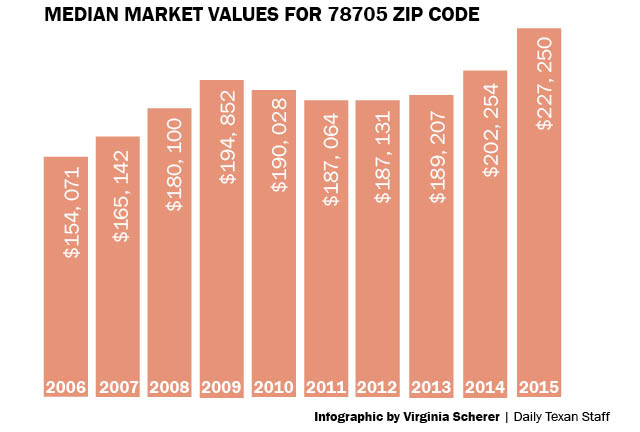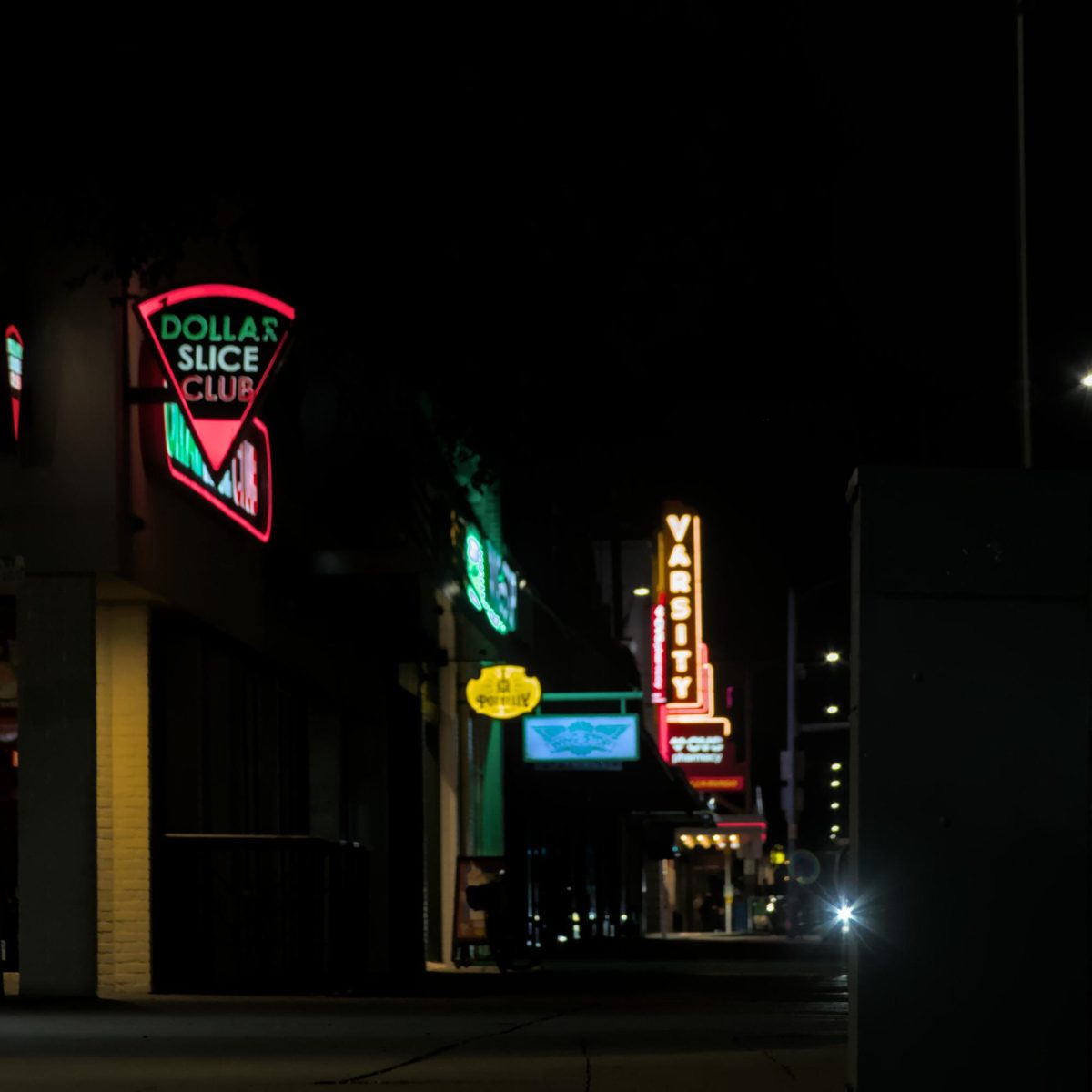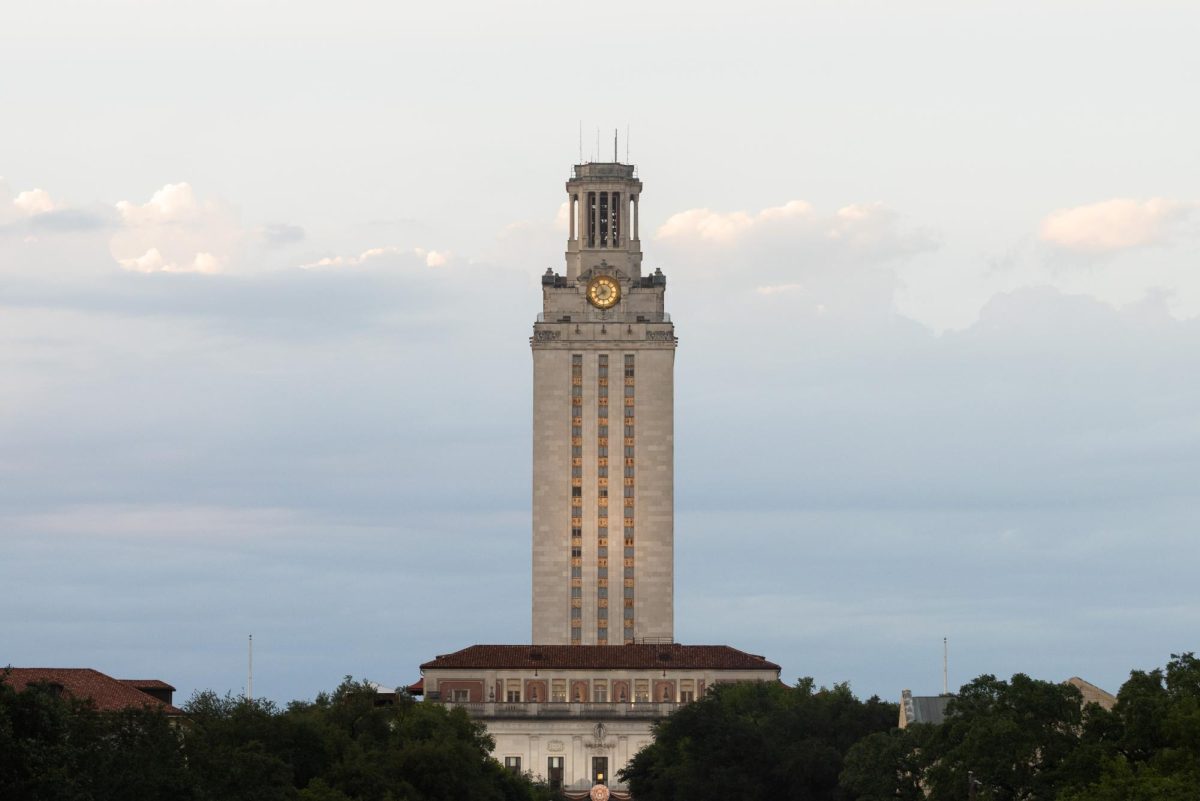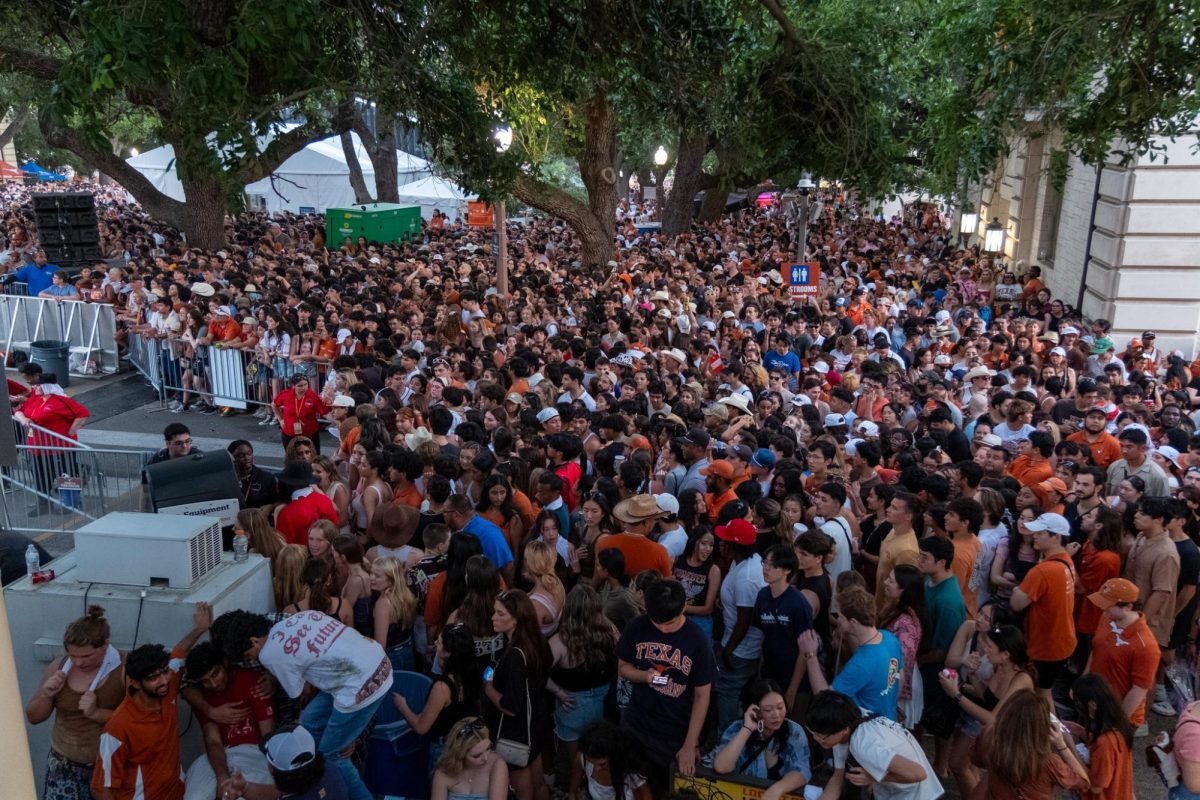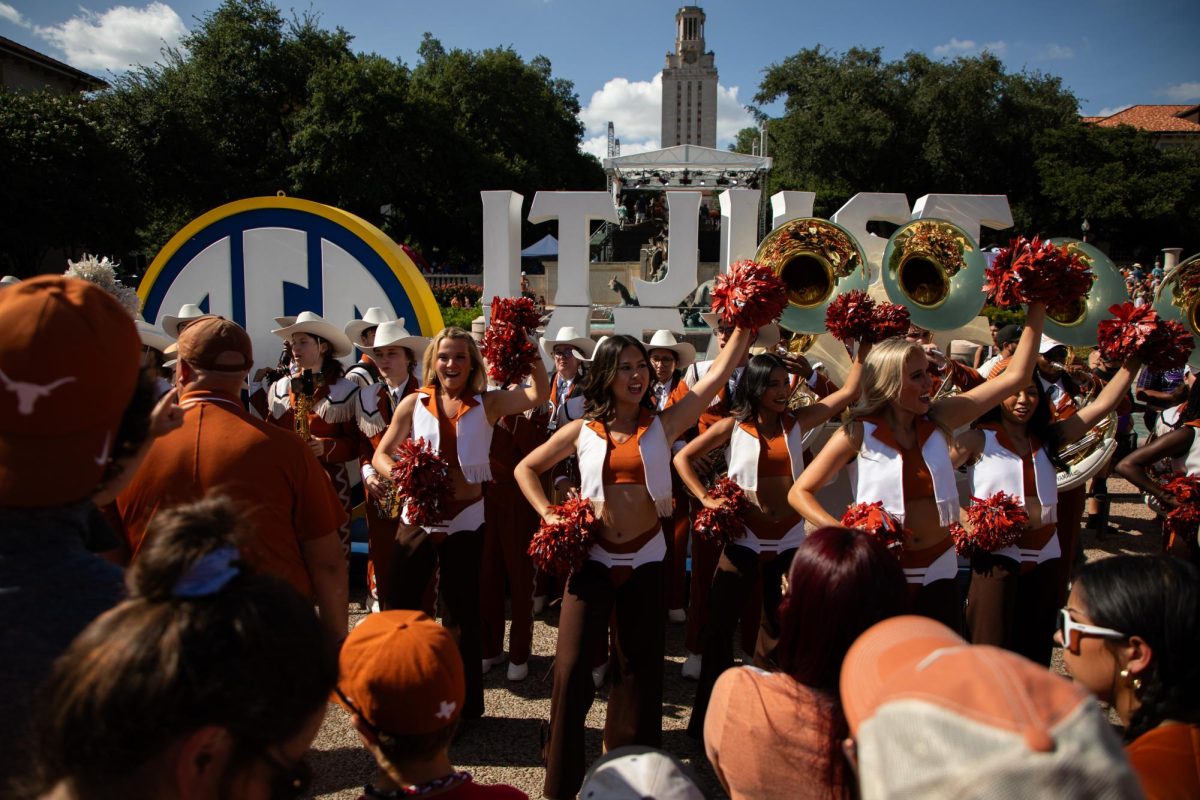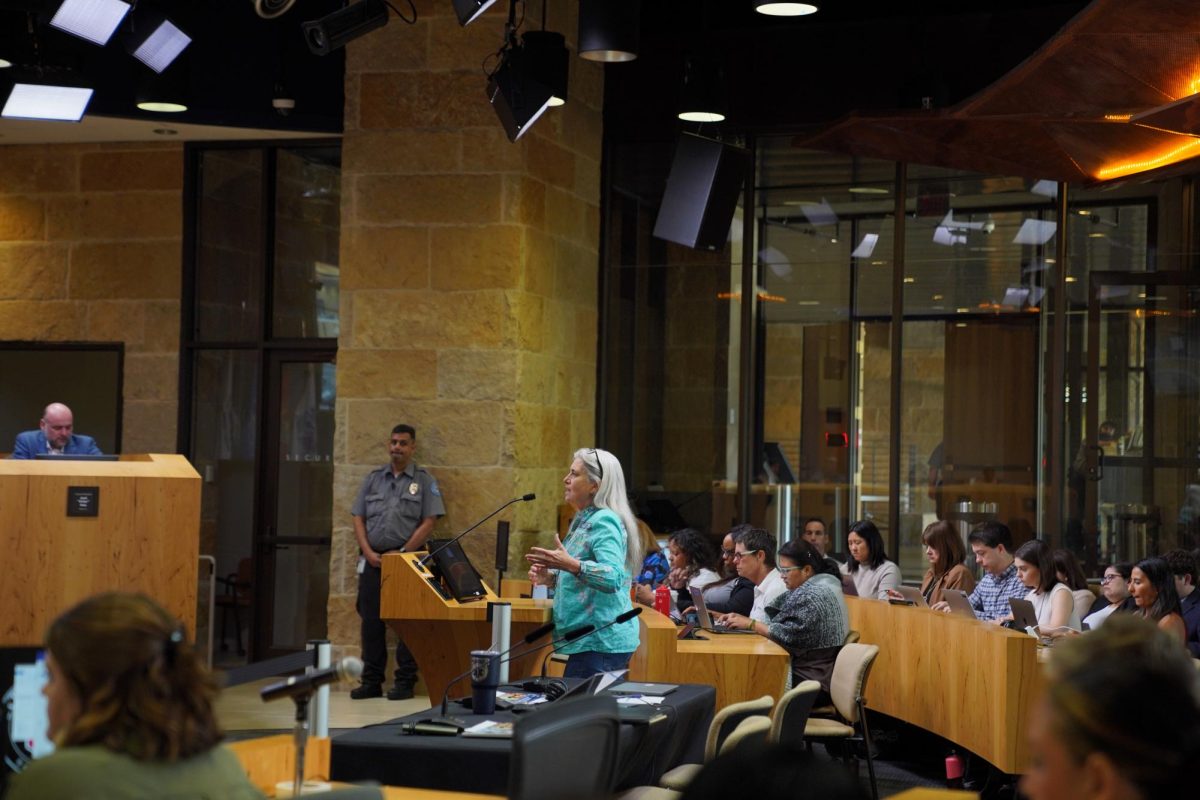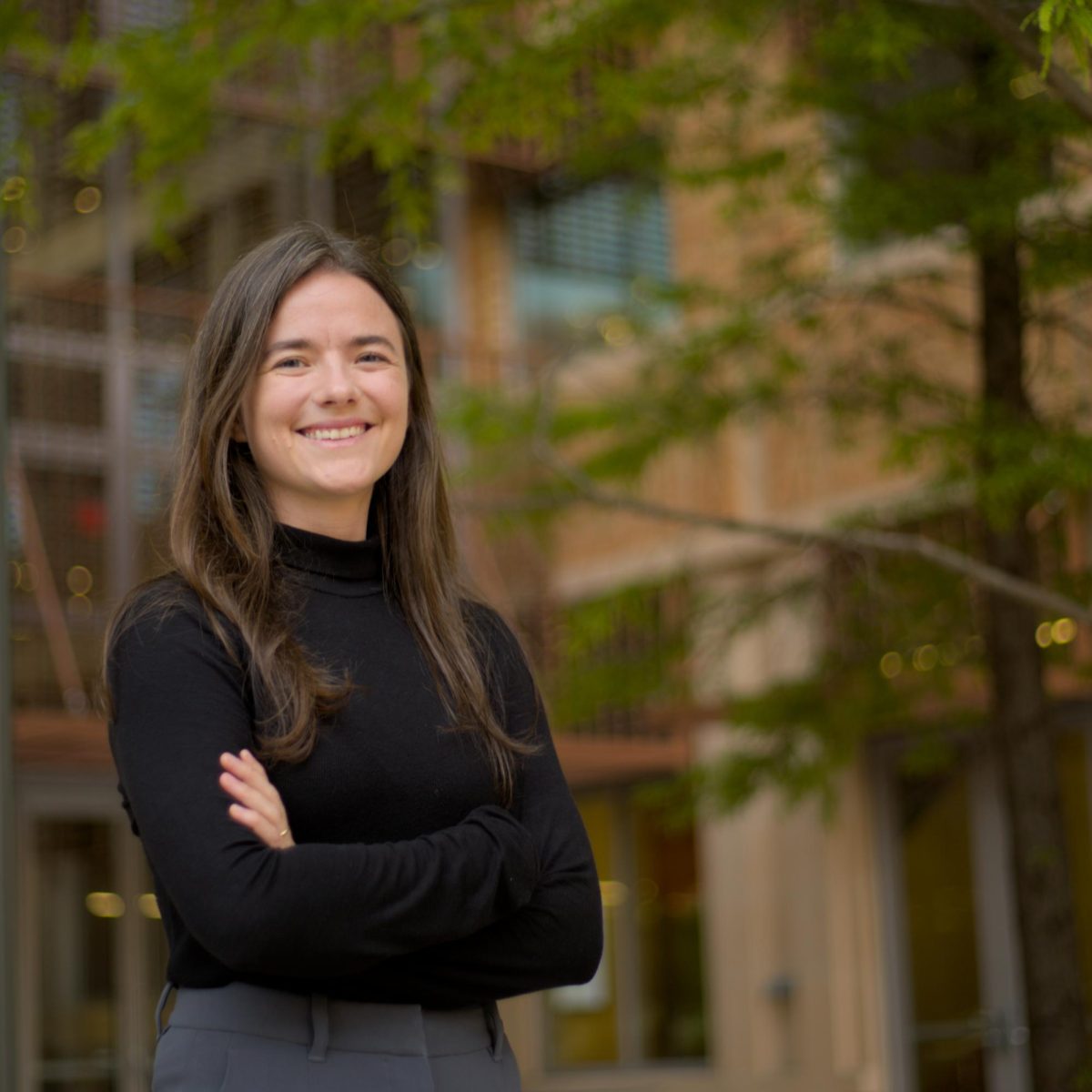Editor’s Note: This is the first in a two-part series of stories examining the affordable housing options available to students looking to live in West Campus. Check out the second part here.
Faced with either providing additional affordable housing units in new apartment complexes or handing over a one-time fee to the city, developers in West Campus have rarely hesitated — they pay up.
The money they put forth — a fee generated by the Neighborhood Housing and Community Development Office based on the square footage of the complex — is deposited into a neighborhood trust fund open to the few developers who are looking to build affordable housing options. This system, established in 2004 alongside West Campus’ new zoning code, University Neighborhood Overlay, and revised in 2013, is intended to address the needs of low-income renters. But despite the frequent rate at which developers opt to pay the fee, the fund is rarely used.
Over 12 years it has gone toward two projects, only one of which is in operation. The so-called “Super Co-op” at 1905 Nueces St., run by College Houses, was built in 2008 and is the first. A forthcoming co-op house at 915 W. San Gabriel St., run by Inter-Cooperative College Housing Austin (ICC), will be the second.
College Houses used the trust fund money to renovate and expand the “Super Co-op,” adding 76 units and bringing its total capacity to 173, and the San Gabriel home will be able to accommodate 35, the organizations said. Each received over $600,000 from the city. College Houses Executive Director Angela Atwood said she plans to apply for the funds again to make needed improvements soon — once enough big-time developers have helped replenish it the fund.
Meanwhile, commercial complexes are regularly built with 150 or more bedrooms, 10 percent of which must still be set aside for affordable housing. They utilize this opt-out mechanism to pay out of providing in-demand, cheap units beyond that minimum threshold.
The contributions commercial complexes choose to put in the fund are significant, but almost all of them opted to pay this fee because of cost-benefit analysis, according to campus realtor Mike McHone. He said they can make more money by taking the initial financial blow.
“Contrary to popular myth, there is no magic money,” McHone said. “A project has to stand on its own.”
The resulting fee is almost always in the tens of thousands of dollars. The Block on 28th Street, home to 208 tenants, was asked to put $48,000 into the fund upon its construction. The city told Pointe on Rio it would have to contribute $66,000. 26 West paid about $201,000.
The few that have elected to provide extra affordable units did so because they can build their complexes slightly higher, according to City of Austin employee Javier Delgado.
“The land is extremely valuable, there isn’t very much of it left, and the people who own most of it are interested in building stuff that’s going to maximize the profit,” ICC Executive Director Billy Thogersen said. “Typically affordable housing is not something that allows you to maximize your development.”
The neighborhood trust fund, which functions like a grant, is almost the only one of its kind in Austin. Developers apply for funding, and the city loans them money. If they continue to uphold the guidelines, the loan is eventually forgiven.
Per a city ordinance, all new West Campus developers must set aside one out of every 10 units and charge less than 60 percent of the Austin area median family household income for them. This amounted to about $740 for a one bedroom in 2014. UNO says that a second, optional tier of affordable units — which can be avoided by paying the fee — need to be leased at less than 50 percent of this median income, or $616 for a one bedroom. In contrast, sharing a four-bedroom, non-affordable unit at The Block can cost over $950 per person.
Should a developer choose to opt out of the second tier, as most do, they have to pay an amount to the city equivalent to a dollar per square foot of the building’s total area. That exact amount is reported to the city by an architect and is often small in comparison to overall construction costs, which are often over $25 million, McHone said.
The affordable housing units that are available, commonly referred to as S.M.A.R.T. housing, always fill up, according to Delgado, although developers occasionally argue otherwise.
“People test the waters sometimes to see what we’ll say,” said Delgado, who gathers the fee during the building process. “People always tell me, ‘I can’t rent my units.’ I tell them, ‘That’s impossible.’”
According to ICC’s Thogersen, this is the latest, slightly less tortured chapter in West Campus development history post-2003, when the UNO was implemented. After that, development took off and prices never turned back. UNO and the affordable housing section were revised in 2013, which he describes as a painful but necessary step forward.
“Before the revision was done, the system was messed up,” Thogersen said. “It was pretty bad. All the affordable units were $1,200 efficiency apartments, and they were all going to people who were the least poor you could possibly be to get in. The system was broken. It was not working.”
To help remedy it, a panel of local interest groups, Thogersen included, got together and debated the revision for around three years. Thorgersen said developers would often argue that increasing the demands related to the fee would spurn development and everyone would suffer.
For example, in a 2010 letter a representative from Education Realty Trust, a Memphis-based developer, wrote the City of Austin to say that an increase in “the affordability requirements of UNO would … decrease the probability of additional projects, which I can only assume is counterproductive to the city’s goal of providing more affordable housing.”
In other words, critics said that raising affordability requirements would, in effect, decrease affordability in the area overall. However, by the end of the revision process a compromise was struck: the fee was doubled from 50 cents per square foot to $1 and the definition of affordability was strengthened. Development has not ceased, but this position is still brought up.
Interactive by Adam Humphrey | Daily Texan Staff
“There’s never enough affordable housing,” McHone said. “Never enough. But at the same time, you’ve got to get projects built. By building projects, you keep the cost down as much as you can. Keeping the supply high is a way to moderate the increases.”
American Campus Communities, an Austin-based company which owns numerous West Campus housing complexes such as Callaway, The Block, and Jefferson at 26th, reported a net income of $26.9 million in February. ACC’s Vice President of Branding Gina Cowart released an email statement to the Texan.
“All of ACC’s properties that are subject to UNO and its affordable housing requirements comply with the applicable standards whether they were acquired or developed,” the statement said. “Zoning designations/overlays, such as UNO, play a vital role in the meaningful planning and sustainable growth in any community and are always a consideration that owners/developers must evaluate when considering the viability of developing properties.”
CA Ventures, which owns 21 Rio and Texan26, and Grand Campus Living did not return requests for comment.
Austin Historic Preservation Officer Steve Sadowsky said the idea behind UNO is good. However, he said making West Campus a financially inclusive area is trickier.
“I think the idea of creating a student village in West Campus is very noble, but I’m afraid that the market prices in West Campus are going to make that more difficult over time,” Sadowsky said. “And maybe if more high rises are built and competition for rooms close to campus lessens then rents can possibly come down. But I really don’t know that there’s a single answer to how to make campus-adjacent living more affordable.”



